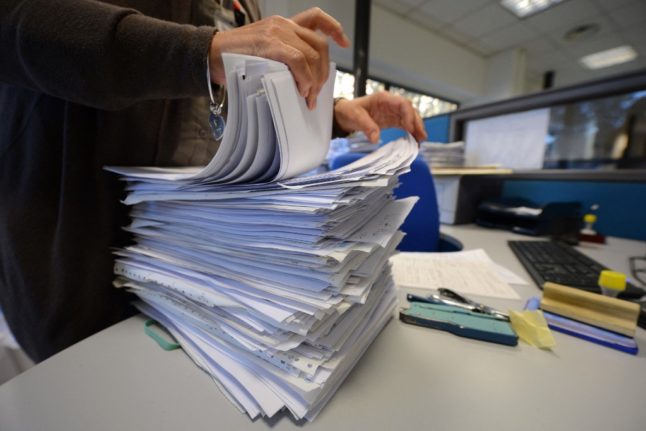Note: This article is no longer being updated. Please find the most recent information about Italy’s flat tax rate for freelancers here.
It’s an aspiration for many – move to Italy and work remotely, generating an income from wherever you like with just a laptop and a phone.
Or perhaps you have an entrepreneurial flair and want to try out a small business idea that will enable you to realise your living-in-Italy dreams.
Whichever way you decide to go freelance in Italy, you’ll need to carefully consider your paperwork and the best tax strategy for your circumstances.
One increasingly popular route is to work under the regime forfettario: an attractive flat-rate tax scheme for individuals and small businesses introduced in 2015.
The idea was to create a financially desirable and more straightforward way to work for yourself, cutting down on Italian red tape as well as your tax bill.
This flat-rate tax scheme simplifies accounting and so, theoretically, frees you up to do more of your job and less of balancing the books. That means no counting receipts for how many pens you bought or calculating how many miles you drove to meetings to offset your taxes.
Whether it’s right for you, however, will depend on various factors. Let’s start with its advantages.
You pay less in taxes
This is the main attraction – you keep more of what you earn and the taxman gets a smaller slice of your hard-earned pie.
In broad terms and depending on your situation, you could pay somewhere either a five- or 15-percent tax on your earnings, regardless of what your working overheads are.
Compared to the standard personal income rates as an employee, known as Irpef (Imposta sui Redditi delle Persone Fisiche), as detailed by the Italian tax office, this is an alluring tax rate.
The range of taxes you’d pay if you worked for a company fall between 23 percent to 43 percent of your gross earnings.
That difference in tax percentages is exactly what the government intended with this regime: to attract more individuals and small businesses to start their own commercial activity.
READ ALSO: The Italian tax calendar for 2024: Which taxes are due when?
The lowest five percent tax rate is for new business activity and lasts for five years. That means if you’re starting up as a freelancer in Italy, you’re granted this temptingly low flat-rate tax on your turnover as long as your self-employment isn’t an extension of a business you carried out previously.
After that, it goes up to 15 percent, which is still comparatively low to the standard Irpef income brackets.
Your job may be eligible for further beneficial tax rates
The tax you pay isn’t a simple blanket sum of five percent (or 15 percent) of what you earn. Rather, it depends on the work you do. Taxable income will change depending on whether you’re working as a self-employed teacher or if you’re working in hospitality, for instance.

You determine your taxable income by applying what accountants call a ‘profitability coefficient’.
In simple terms, each professional group has a different codice ATECO (income code) and a corresponding percentage of what they earn that can be taxed.
For instance, a private teacher must pay tax on 78 percent of their gross earnings, but computer engineers have it better at 67 percent. If you run an e-commerce business, only 40 percent of your earnings are subject to tax.
For a full list of ATECO codes, see here.
Alongside income tax, you’d have to pay INPS (Istituto nazionale della previdenza sociale) contributions. These are social welfare contributions to cover you for events such as sick leave, pensions and maternity benefits and this tax regime doesn’t reduce the amount of contributions you pay.
The calculation of INPS contributions in the flat-rate scheme varies according to the type of work activity you do. To get a vague idea of how much this will come to, the usual rate is around 25 percent – it’s advised you speak to an accountant (commercialista) to find out how much you’d need to pay.
It’s lighter on paperwork
Anything that cuts down on Italian bureaucracy is an undisputed advantage and this freelance regime offers exactly that.
To access the scheme, you need to obtain a partita IVA (VAT number) and select Regime Forfettario as your method of paying tax.
As noted, the flat-rate tax scheme makes the accounting side simpler and setting up as a freelancer under this regime is much more straightforward than other routes.
You don’t need to keep purchase receipts or track what you’ve bought for the company to offset your taxes. That’s the whole point of this scheme: it’s a flat-rate tax with less red tape.
Not having to add up your petrol expenses or inputting the cost of paper clips into a spreadsheet might be enough of an incentive to encourage you to start up your own business in Italy.
You also don’t need to charge VAT on invoices, so that means you don’t need to complete an annual VAT return. What’s more, you have a competitive edge in the market as you won’t need to add VAT for your clients.
But of course you’ll need to be aware that the VAT exemption goes both ways. So, just as you don’t charge VAT, you can’t claim back the VAT you spend on IT equipment, stationery or any other business-related costs.
This is just one flip-side that might make you consider whether, in the end, this regime is for you.
Let’s take a look at the disadvantages of the scheme.
You can’t offset your taxes
VAT aside, if you have a lot of business overheads, this regime might not turn out to be as financially viable as you hoped.

Another tax scheme might be better suited to you if you have a lot of outgoings related to doing your job, which would allow you to deduct your expenses from the tax you pay.
However, if you work from home and only need a laptop and a phone, the regime forfettario is a good option.
Its bureaucracy has gotten more complex
The introduction of the so-called fattura elettronica (e-invoice) in 2022 was meant as an advantage of the tax regime, making admin quicker and easier.
However, on closer inspection, the rules on digital invoicing aren’t always straightforward and it can be hard to navigate the online invoicing system at first.
For full details on invoicing rules, see the Italian tax office’s website or refer to an accountant (commercialista).
There’s a limit on how much you can earn
You don’t qualify for the regime forfettario if you make more than €85,000 from self-employment in any given year.
Therefore, if your business plans and projections look to exceed this level of earnings, you may be better looking at a different incentive on offer for earners above this threshold.
However, there is a workaround depending on where you get your income from. You can actually have a position of employment alongside freelancing, meaning that you can still earn over €85,000 annually if the portion of income exceeding €85,000 comes from an employee wage.
However, you can only earn up to €30,000 per year as an employee to qualify for this regime.
There’s a cap on previous earnings
You’re not eligible for this regime if you earned more than €30,000 in the previous year from employment. So, depending on your previous position and income, you may not be allowed to take advantage of the scheme.
You can’t freelance for your previous employer solely
You might feel it’s more financially advantageous to go freelance instead of being on the payroll of your employer. However, this regime prohibits you from doing this if you have no other clients.
If you can drum up business from elsewhere though, you are allowed to work for your previous employer and charge them invoices instead of getting a paycheck.
Of course, they will no longer pay some of your INPS contributions if you choose this route and this will instead all fall to you.
It’s worth noting that you also can’t already have a business in the same professional field.
Whether this way of freelancing in Italy is right for you overall depends on your personal circumstances and speaking to a financial expert is advised.
A first version of this article was published in June 2022.



 Please whitelist us to continue reading.
Please whitelist us to continue reading.
Great article thanks. It doesn’t however mention the new electronic invoicing obligations. As far as I know freelancers will be required to submit “fatture elettroniche” (digital invoices registered in the tax authority’s central system) from the 1st of July 2022, but being Italy this could have changed since I last read about it a few weeks ago.
An addendum would be really helpful to clarify who will be affected by this new regulation (if it still applies) and how one goes about submitting digital invoices without having to rely on an accountant and their potentially costly in-house system.
Hi, we’ve got some more information about how the new electronic invoicing system will work now – please find an article about that here:
https://www.thelocal.it/20220628/explained-how-italys-flat-rate-tax-scheme-is-going-digital-with-e-invoicing/
Thanks for reading,
– Clare
I have to mention that it’s almost impossible to get loans and mortgages on IVA. Also the paperwork most certainly is NOT lighter, it’s a bureaucratic nightmare. I would avoid IVA at all costs. It has given employers a reason not to give out permanent contracts. While it gives freedom, it prevents the individual from getting ahead in life because INPS payments are so high; taxes are quite low. If anyone is thinking about going IVA, really consider your options.